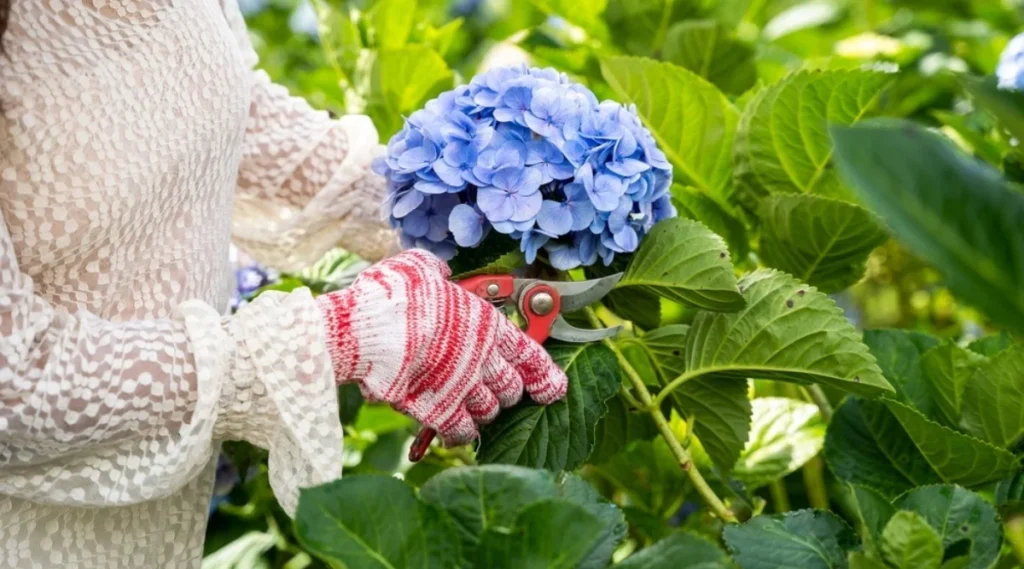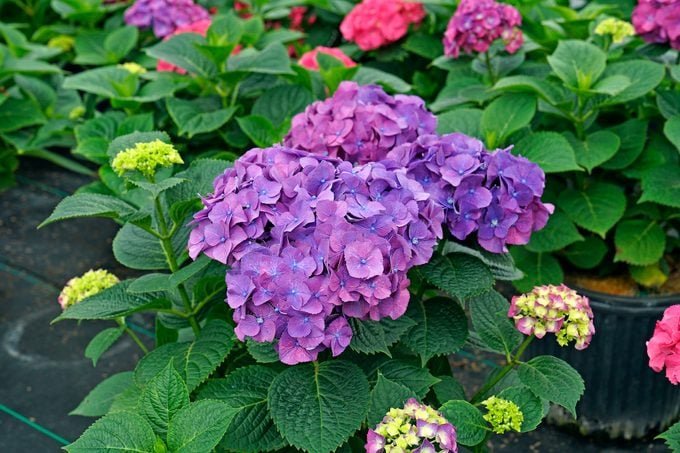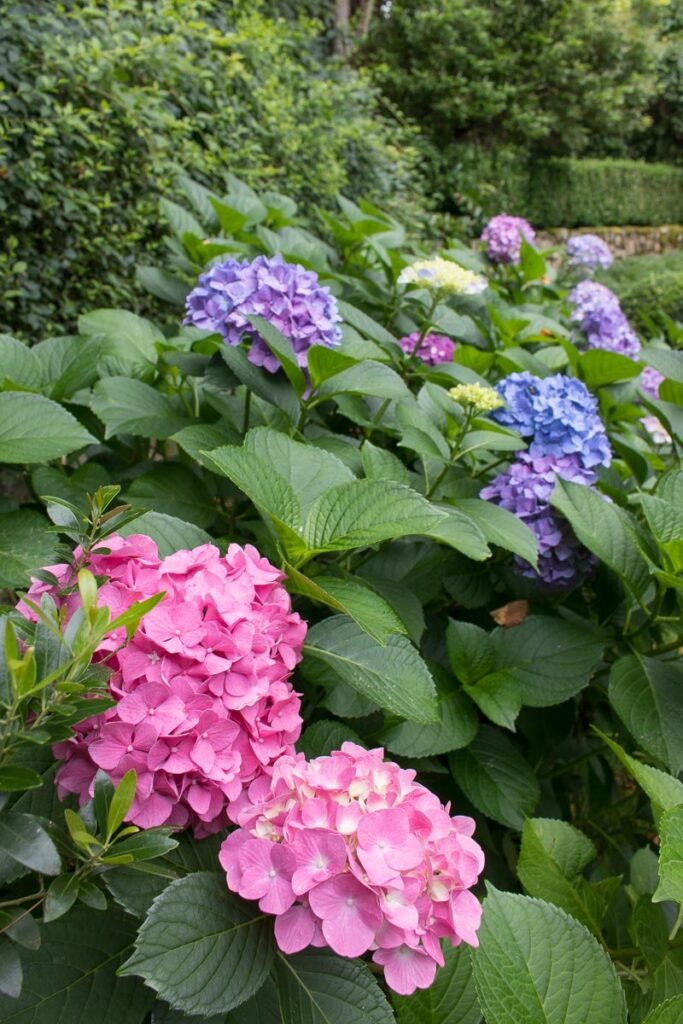Hydrangeas are beloved by gardeners for their lush foliage, vibrant blooms, and the romantic charm they bring to landscapes. But achieving those show-stopping, bigger-than-life blooms isn’t just about water and sunshine—it’s also about timing your pruning perfectly.
Pruning hydrangeas at the wrong time is one of the most common reasons gardeners end up with no blooms at all. To help you avoid that fate, this article will guide you through the best time to prune hydrangeas—based on their type—and how to do it properly so you can enjoy larger, more abundant flowers season after season.
Let’s dive into the details of how, when, and why pruning hydrangeas correctly can dramatically enhance their beauty.
Why Pruning Matters for Hydrangeas
Pruning serves several essential purposes in hydrangea care:

- Promotes bigger and healthier blooms
- Removes dead or weak stems
- Improves airflow and shape
- Encourages new growth
- Prevents disease and overgrowth
But timing is everything. The biggest mistake many gardeners make is pruning at the wrong time for the hydrangea variety they have.
First, Know Your Hydrangea Type
Before you even touch your pruning shears, identify which type of hydrangea you’re working with. Different species bloom on either old wood (last year’s growth) or new wood (the current year’s growth)—and this determines when to prune.
Here are the five most common types of hydrangeas:
| Hydrangea Type | Blooms On | Common Varieties |
|---|---|---|
| Bigleaf (H. macrophylla) | Old wood | Mophead, Lacecap |
| Oakleaf (H. quercifolia) | Old wood | Snow Queen, Alice |
| Panicle (H. paniculata) | New wood | Limelight, Vanilla Strawberry |
| Smooth (H. arborescens) | New wood | Annabelle, Incrediball |
| Mountain (H. serrata) | Old wood | Tuff Stuff, Bluebird |
Let’s break these down with pruning instructions and timing for each.
1. Bigleaf Hydrangea (Hydrangea macrophylla)

Prune: Immediately After Blooming (Late Summer)
Bigleaf hydrangeas bloom on old wood, meaning flower buds are set the summer before they bloom. If you prune them in fall, winter, or spring, you’ll likely cut off the next season’s flowers.
Best Time to Prune:
- Late summer to early fall, right after flowers fade
How to Prune:
- Cut back dead flower heads to the first set of healthy buds
- Remove up to one-third of the oldest stems at the base to rejuvenate
- Avoid heavy pruning unless you’re renovating an old shrub
Tips for Bigger Blooms:
- Fertilize lightly in spring with a balanced fertilizer
- Avoid heavy nitrogen—it promotes foliage over flowers
2. Oakleaf Hydrangea (Hydrangea quercifolia)

Prune: Right After Flowering (Mid to Late Summer)
Like Bigleaf, Oakleaf hydrangeas bloom on old wood. Pruning them too late in the season removes next year’s buds.
Best Time to Prune:
- Immediately after flowering ends, typically mid to late summer
How to Prune:
- Lightly shape the plant after bloom
- Remove damaged or crossing branches
- Cut at the base of stems that are 3+ years old to rejuvenate
Tips for Bigger Blooms:
- Grow in partial shade for best performance
- Do not overwater—Oakleafs prefer slightly dry conditions
3. Panicle Hydrangea (Hydrangea paniculata)
Prune: Late Winter to Early Spring

Panicle hydrangeas are some of the most forgiving and easiest to prune, as they bloom on new wood. This means you can cut them back hard in winter or early spring, and they’ll still flower prolifically that year.
Best Time to Prune:
- Late winter to early spring, before new growth begins
How to Prune:
- Cut stems back to about 1/3 their length
- Remove old, weak, or crossing stems at the base
- For tree-form varieties, maintain a central leader
Tips for Bigger Blooms:
- Panicles like full sun—more sun = more blooms
- Regular pruning increases flower size and plant shape
4. Smooth Hydrangea (Hydrangea arborescens)

Prune: Late Winter or Early Spring
These bloom on new wood, so late-winter pruning helps them direct energy into vigorous stems and larger flowers. Popular varieties like ‘Annabelle’ benefit greatly from yearly rejuvenation.
Best Time to Prune:
- Late winter to early spring, before leaves emerge
How to Prune:
- Cut all stems back to 6–12 inches from the ground
- Thin out weak stems from the base
- Remove old, dead wood
Tips for Bigger Blooms:
- Too many stems = smaller flowers; reduce quantity for size
- Stake large blooms to avoid flopping in rain
5. Mountain Hydrangea (Hydrangea serrata)
Prune: Right After Flowering (Summer)
Mountain hydrangeas are similar to Bigleaf but more cold-hardy. They bloom on old wood, so early pruning is crucial to preserve next year’s blooms.
Best Time to Prune:
- Right after flowering ends, usually mid-summer
How to Prune:
- Trim dead flower heads back to a pair of healthy buds
- Remove old stems at the base to encourage new shoots
- Shape gently—never hard prune
Tips for Bigger Blooms:
- Mulch in winter to protect buds in cold climates
- Avoid heavy pruning or you’ll reduce flower count
Special Note: Reblooming Varieties (e.g., Endless Summer®)
Some newer hydrangeas bloom on both old and new wood. These include varieties like Endless Summer, BloomStruck, and Tuff Stuff.
When to Prune:
- Only deadhead or lightly shape after flowering
- Avoid hard pruning unless rejuvenating an old plant
These hydrangeas can be more forgiving, but the safest bet is to prune minimally to preserve blooms from both sources.
General Pruning Tips for Hydrangeas
Regardless of variety, follow these pruning tips to protect plant health and maximize blooms:
Tools You’ll Need:
- Bypass pruners for smaller branches
- Loppers for thicker stems
- Gloves and safety glasses
Sanitation:
- Clean blades between plants to prevent disease spread
- Sharpen tools regularly for clean cuts
What to Remove:
- Dead, diseased, or damaged wood
- Crossing or rubbing branches
- Weak or thin interior shoots
Pro Tip:
- When in doubt, prune less, not more. Over-pruning is a leading cause of bloom loss.
Climate and Regional Considerations
If you live in a region with harsh winters:
- Do not prune old-wood hydrangeas in fall—it exposes buds to winter damage.
- Use mulch or burlap wraps to protect tender buds.
- Consider reblooming varieties for more reliable flowering.
In warmer climates:
- You can prune earlier in spring, but always wait until after the last frost to avoid shocking the plant.
Conclusion: Timing is the Secret to Stunning Hydrangeas
Getting those voluminous, breathtaking hydrangea blooms depends heavily on when and how you prune. The key is to know your variety—old wood or new wood—and prune at the appropriate time.
Here’s a quick recap:
| Type | Prune Time | Blooms On |
|---|---|---|
| Bigleaf | After flowering (summer) | Old wood |
| Oakleaf | After flowering (summer) | Old wood |
| Panicle | Late winter/early spring | New wood |
| Smooth | Late winter/early spring | New wood |
| Mountain | After flowering (summer) | Old wood |
With proper timing, gentle technique, and care, you’ll be rewarded with larger, more consistent, and longer-lasting blooms—turning your hydrangeas into the envy of the neighborhood.
